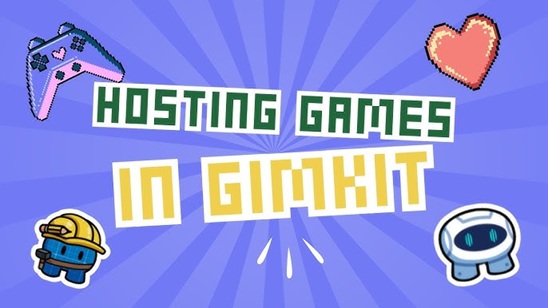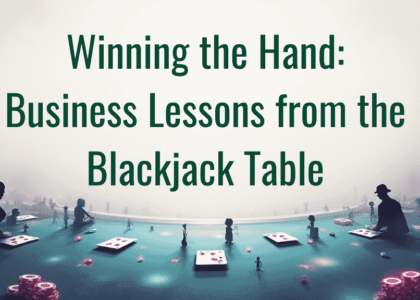In the evolving landscape of education, interactive learning tools have become essential in creating engaging and memorable experiences for students. Among these tools, Gimkit has emerged as a dynamic platform that blends gaming with knowledge reinforcement, allowing educators to transform mundane lessons into highly interactive sessions. While many educators focus on sharing the join code and starting a game, mastering the role of a Gimkit host goes far beyond this simple step. Becoming an effective Gimkit host involves a strategic understanding of game mechanics, student engagement, and creative game customization. In this guide, we will explore everything you need to know to host unforgettable Gimkit learning games that not only educate but also captivate your audience.
Table of Contents
Understanding the Role of a Gimkit Host
Being a Gimkit host is not merely about initiating a game session; it is about orchestrating an immersive learning experience. The host is responsible for setting the tone of the game, managing participants, and adapting the gameplay to suit the learning objectives. Unlike traditional classroom methods where the teacher dictates content delivery, hosting a Gimkit game allows students to take an active role in their learning journey. The host becomes a facilitator, guiding the pace, encouraging participation, and ensuring that each player remains engaged.
A proficient Gimkit host recognizes that the platform’s strength lies in its ability to merge education with gaming. This requires understanding how different features, such as power-ups, kits, and game modes, can be strategically utilized to reinforce learning objectives. A successful host balances competitiveness with collaboration, ensuring that students are motivated but not overwhelmed.
Preparing for a Gimkit Game: The Essentials
Preparation is key to successful Gimkit hosting. Before launching any game, the host must carefully select or create content that aligns with the lesson plan. Gimkit offers the flexibility to use pre-existing kits or create custom ones, which allows educators to tailor the questions specifically to their curriculum. A well-prepared kit should include a balanced mix of question types and difficulty levels, catering to students with varying proficiency levels.
Another critical aspect of preparation involves understanding the platform’s technical features. A Gimkit host should be familiar with settings such as game duration, point systems, and special game modes like Team Mode, Classic Mode, or Fast Money Mode. Each mode brings a unique dynamic to the classroom, and knowing when to use which mode can significantly enhance engagement and learning outcomes.
Finally, testing the kit in a practice session can help identify potential pitfalls. This could include unclear questions, typos, or overly challenging items. By ironing out these issues beforehand, the host ensures a smooth and professional gaming experience for all participants.
Engaging Students: Techniques for Dynamic Hosting
One of the most crucial responsibilities of a Gimkit host is maintaining student engagement. Unlike traditional lessons, where attention may fluctuate, the gamified nature of Gimkit encourages active participation. However, a host must employ specific strategies to maximize engagement and motivation.
First, setting clear expectations is vital. Before the game begins, the host should explain the rules, point system, and objectives. Transparency ensures that students feel comfortable and confident in participating. Additionally, injecting a sense of fun and excitement into the game can make a significant difference. Hosts can use playful commentary, celebrate achievements, and even create mini-challenges or bonuses that keep players intrigued.
Interaction is another cornerstone of effective hosting. The host should monitor player activity, respond to questions, and provide feedback during and after each round. Recognizing effort, rather than just correct answers, fosters a positive learning environment and encourages students to stay engaged. Moreover, using the platform’s collaborative features, such as team play, can enhance social learning and peer interaction, making the experience more dynamic and memorable.
Customizing the Gimkit Experience
A hallmark of expert Gimkit hosts is their ability to customize the game experience to suit specific learning goals. Beyond standard settings, hosts can leverage various features to tailor gameplay. For instance, the use of power-ups can introduce strategic elements, allowing students to multiply points or gain advantages in creative ways. Similarly, adjusting the time limit per question can create a balance between thoughtful consideration and quick thinking.
Custom kits also play a significant role in personalization. A host can design questions that reflect current lessons, upcoming assessments, or even real-world applications. By integrating multimedia elements like images, videos, or audio clips, the game becomes richer and more engaging. This level of customization ensures that the game is not only educational but also relevant and stimulating for the participants.
Furthermore, the host can vary game modes to suit different classroom dynamics. Team Mode promotes collaboration and group problem-solving, whereas Classic Mode emphasizes individual knowledge and quick thinking. By experimenting with different modes, a host can keep the learning experience fresh and exciting for recurring sessions.
Managing Challenges as a Gimkit Host
Hosting a Gimkit game comes with its own set of challenges. Technical issues, varying skill levels, and maintaining focus are common obstacles that hosts may encounter. Being proactive and adaptable is essential for overcoming these hurdles.
Technical preparedness includes ensuring a stable internet connection, checking that all devices are compatible, and being ready to troubleshoot common issues. Having a backup plan, such as a secondary kit or offline activity, can help maintain momentum if problems arise.
Addressing differences in skill levels is another critical aspect. Some students may dominate the game while others struggle to keep up. A skilled host can balance this by offering tiered challenges or rotating power-ups to provide equal opportunities for all players. Encouraging peer support and collaborative problem-solving can also help less confident students feel included and motivated.
Maintaining focus throughout the game is crucial, particularly in longer sessions. A host can introduce intermittent mini-games, bonus rounds, or thematic variations to keep attention high. By carefully pacing the game and observing participant reactions, a host ensures that the educational objectives are met without sacrificing engagement.
Analyzing and Leveraging Game Data
One of the most powerful tools available to a Gimkit host is the platform’s analytics. After each game, hosts can review performance data, identify patterns, and gain insights into student understanding. This data-driven approach allows hosts to pinpoint areas where students excel or struggle, providing valuable feedback for future lessons.
Hosts can use analytics to adjust question difficulty, reframe problematic concepts, or even design follow-up activities that reinforce learning. Sharing this data with students can also foster a growth mindset, as learners can see tangible evidence of their progress and areas for improvement.
Additionally, tracking trends over multiple sessions helps hosts refine their teaching strategies. By understanding which types of questions or game modes yield the best engagement and learning outcomes, a host can continually enhance the overall experience, ensuring that each game is more effective than the last.
Beyond the Classroom: Expanding Gimkit’s Potential
While Gimkit is often used in traditional classroom settings, its potential extends far beyond. Teachers, trainers, and facilitators in various educational contexts can harness the platform for workshops, remote learning, corporate training, and extracurricular activities. The principles of effective hosting remain the same: preparation, engagement, customization, and data-driven improvement.
For remote learning scenarios, a skilled Gimkit host can create interactive sessions that replicate the excitement of in-person gameplay. Using screen sharing, breakout rooms, and virtual collaboration tools, hosts can ensure that distance learning remains interactive and enjoyable. In corporate training, Gimkit can be adapted to reinforce professional knowledge, team-building exercises, or problem-solving skills, proving that gamified learning is versatile and impactful across contexts.
Building a Community of Learners Through Gimkit
A truly exceptional Gimkit host understands that the game is more than just a series of questions—it is a platform for building a vibrant learning community. Encouraging collaboration, peer recognition, and friendly competition creates an environment where students feel valued and connected. Hosts can foster this sense of community by celebrating achievements, highlighting creative strategies, and promoting positive interaction among participants.
This communal aspect of learning enhances retention and motivation. When students associate educational activities with fun, collaboration, and recognition, they are more likely to engage deeply and retain knowledge over the long term. The Gimkit host, therefore, plays a pivotal role not just in delivering content, but in shaping the learning culture itself.
Continuous Improvement: Evolving as a Gimkit Host
Mastering Gimkit hosting is an ongoing journey. Each session offers new insights and opportunities for improvement. Hosts should actively seek feedback from participants, reflect on their own practices, and experiment with new features and game modes. Continuous learning ensures that the host remains responsive to student needs and can consistently deliver high-quality, memorable learning experiences.
Moreover, connecting with a community of fellow educators and hosts can provide inspiration, tips, and resources for enhancing game design and engagement strategies. Sharing experiences, exploring innovative approaches, and staying updated with Gimkit’s latest features allows hosts to evolve and keep their sessions exciting and effective.
Conclusion: The Art of Gimkit Hosting
Being a Gimkit host is much more than sharing a join code and starting a game. It is an art that blends educational strategy, game design, and interpersonal skills. From preparation and customization to engagement, data analysis, and community building, hosting a Gimkit game requires thoughtful planning and dynamic execution.
By mastering these skills, educators and facilitators can create unforgettable learning experiences that captivate students, reinforce knowledge, and foster a love for interactive learning. The ultimate goal of a Gimkit host is not just to entertain, but to inspire curiosity, collaboration, and a lifelong passion for learning. Whether in a classroom, a remote learning environment, or a corporate setting, the art of Gimkit hosting holds the potential to transform education into an engaging, memorable, and impactful journey.






